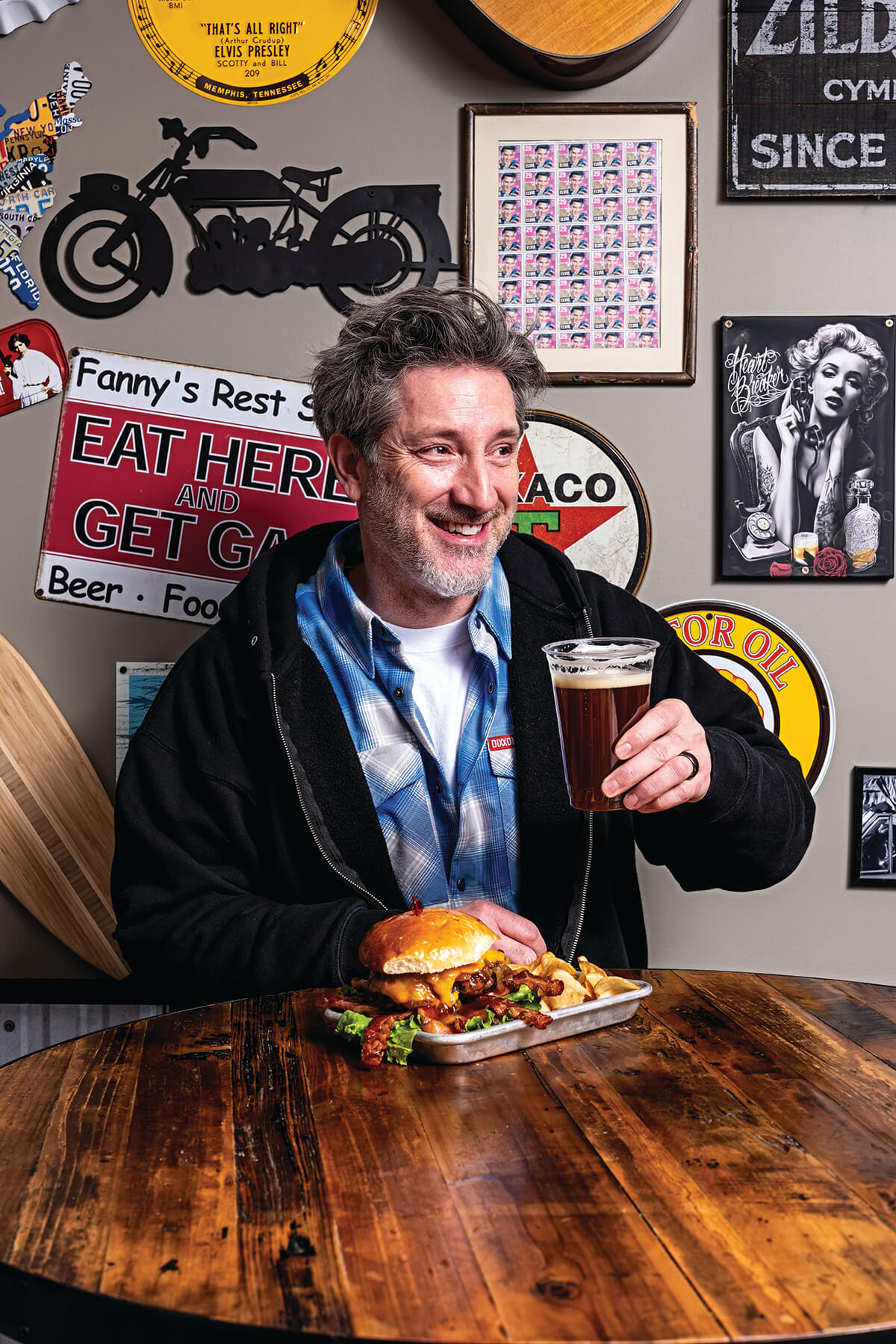Food & Drink
Vagabond Sandwich Company in Bel Air Aims to Be Your Next Pit Stop
Specializing in burgers, melts, and sandwiches, Ben Meyer's neighborhood shop is a "living art project."

Vagabond Sandwich Company owner Ben Meyer tried his hand at several professions before committing to a career in hospitality. A one-time art student, he dabbled in graphic design for a bit and even did some acting. But having worked as a bartender and chef, restaurant work kept calling. In 2013, Meyer purchased Dillweeds, an old sandwich shop on Main Street in Bel Air.
“Usually, you start things with a bank account, but I sold everything I had and banked on the fact that I was young and worked all the time,” he says. “I renamed it Vagabond as soon as I could afford the $2,000 for an awning.”
Vagabond specializes in burgers, melts, and sandwiches—all with playful names like the Jimi Hamdrix with pit ham and bacon on ciabatta. The vibe is equally quirky.
“It’s essentially like my college bedroom,” says Meyer. “There’s luggage on top of the Coke machine, old skateboards on the walls, and license plates that line the walkway—it has this traveling American vibe.”
What did you want Vagabond to be?
I wanted it to be like a funky little Diners, Drive-Ins and Dives spot, like a joint. I grew up in Bel Air. My family is from California and I grew up doing road trips and spending time on both coasts, so I have that Americana road-trippy thing in my blood. I wanted it to be representative of the area, but also something you’d find on the side of the road in the middle of nowhere.
Describe your menu mission.
When I opened the business, the menu was very vanilla, like tuna fish sandwiches. I’d slowly introduce a special. When I had built up the business to the point where I had made $500, I’d lose a [basic] sandwich, which I knew was going to piss four people off, but I’d gained seven people who liked my creative sandwiches. Dillweeds catered to the 150 people who worked in the nearby circuit and district courthouses—now it’s a place that people will drive to.
Where did the name come from?
My mom’s mom is from San Bernardino, California. When my mom was a child, she remembers hobos coming to the house who would travel looking for work. My grandmother would feed them. They had this whole subculture of leaving chalk symbols to guide people to good things and away from dangers—apparently, my mother’s house was a stop off the train and my grandmother would feed them. My mother has memories of that, which she shared with me, and I thought that was cool.
Did your background in art help you run the business?
I am the worst businessperson there is, but my restaurant is like a living art project.